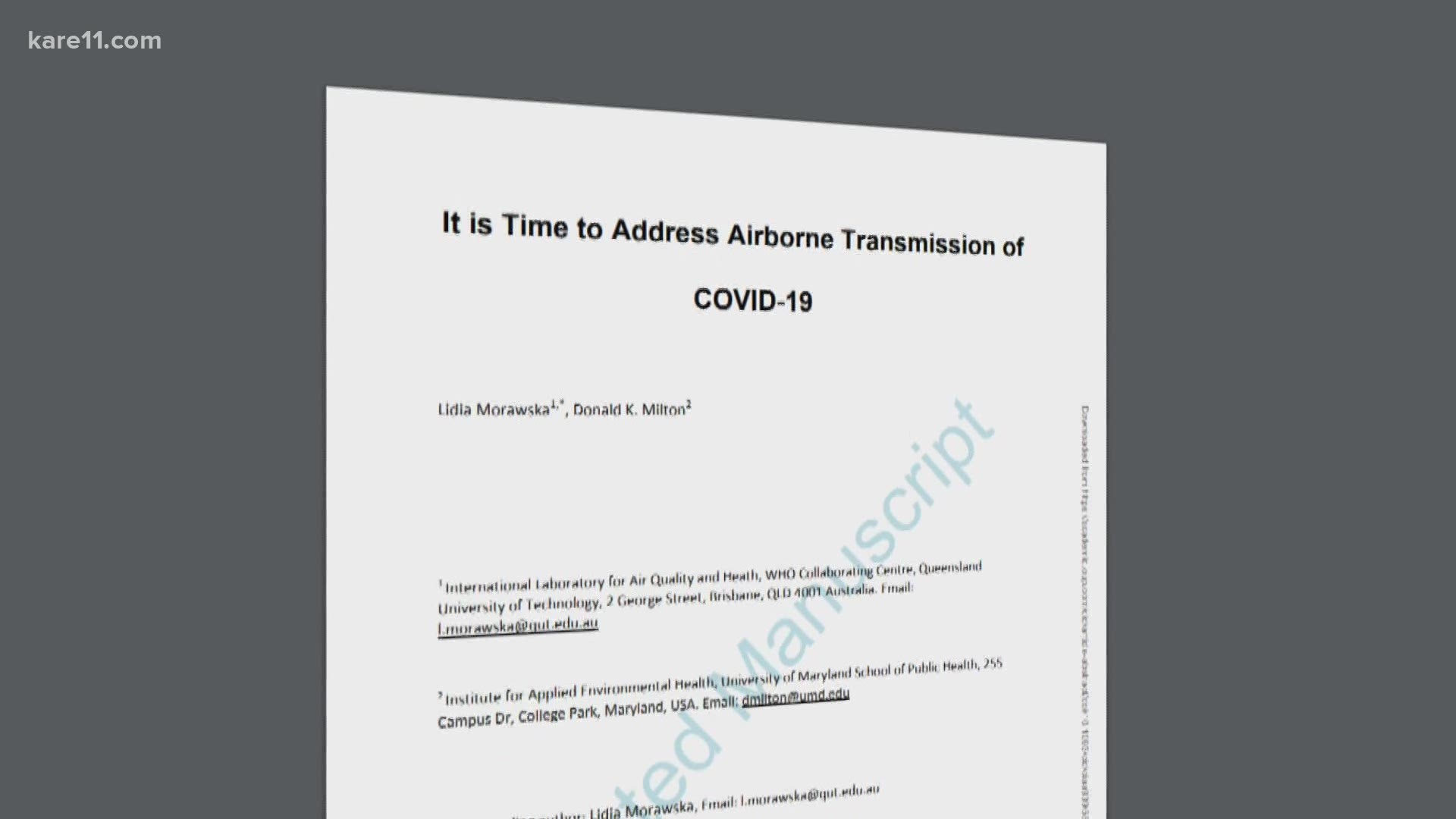ST PAUL, Minn. — The World Health Organization now recognizes the potential for airborne spread of the coronavirus through microscopic particles that remain in poorly ventilated air for hours.
The change comes after 239 scientists from around the world issued an open letter saying recent studies have shown “… beyond any reasonable doubt that viruses are released during exhalation,” and that they can pose a risk of exposure at distances beyond two meters.
The letter has convinced the WHO to now consider the possibility of airborne spread of the virus, but the WHO has not gone as far to say the virus travels on droplets solely through breathing, as oppose to just coughing, singing, sneezing or loudly talking.
In the WHO’s update on the potential for aerosol transmission of the virus, outside the healthcare setting, it says, “There have been reported outbreaks of COVID-19 in some closed settings, such as restaurants, nightclubs, places of worship or places of work where people may be shouting, talking, or singing. In these outbreaks, aerosol transmission, particularly in these indoor locations where there are crowded and inadequately ventilated spaces where infected persons spend long periods of time with others, cannot be ruled out. More studies are urgently needed to investigate such instances and assess their significance for transmission of COVID-19.”
“The [scientists’] document lays out exactly that answer and why the WHO has to look at the aerosol transmission as being an important part of the transmission of the SARS-COV-2 virus,” said Dr. Michael Osterholm, an infectious disease expert at the University of Minnesota.
Friday, leaders with the Minnesota Department of Health said they will not be changing any safety guidelines yet until further evidence of airborne transmission warrants changes.
Kris Ehresmann, director the Minnesota Department of Health infectious disease division, said that mask wearing and, in particular, six feet of social distancing are still the best practices even with the little we know about possible airborne transmission.
“The data that has looked at the impact of social distancing does show that when you are social distancing it makes a difference in reducing transmission,” said Ehresmann.
KARE 11’s coverage of the coronavirus is rooted in Facts, not Fear. Visit kare11.com/coronavirus for comprehensive coverage, find out what you need to know about the Midwest specifically, learn more about the symptoms, and see what businesses are open as the state slowly lifts restrictions. Have a question? Text it to us at 763-797-7215. And get the latest coronavirus updates sent right to your inbox every morning. Subscribe to the KARE 11 Sunrise newsletter here. Help local families in need: www.kare11.com/give11.
The state of Minnesota has set up a data portal online at mn.gov/covid19.

